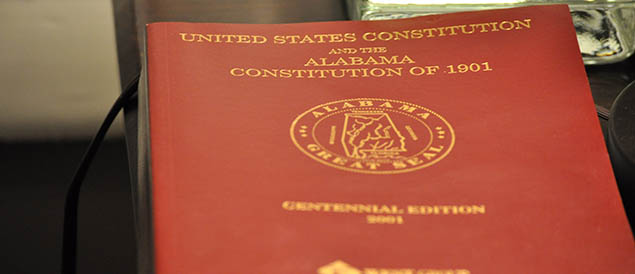With more than 300,000 words and over 800 amendments, Alabama’s Constitution is 40 times longer than the US Constitution, and holds the record for being the longest active constitution in the world. Originally written in 1901 by men seeking to establish the law of white supremacy in the state, the constitution still requires racially segregated schools and outlaws interracial marriage, laws that have been nullified by the United States Supreme Court.


